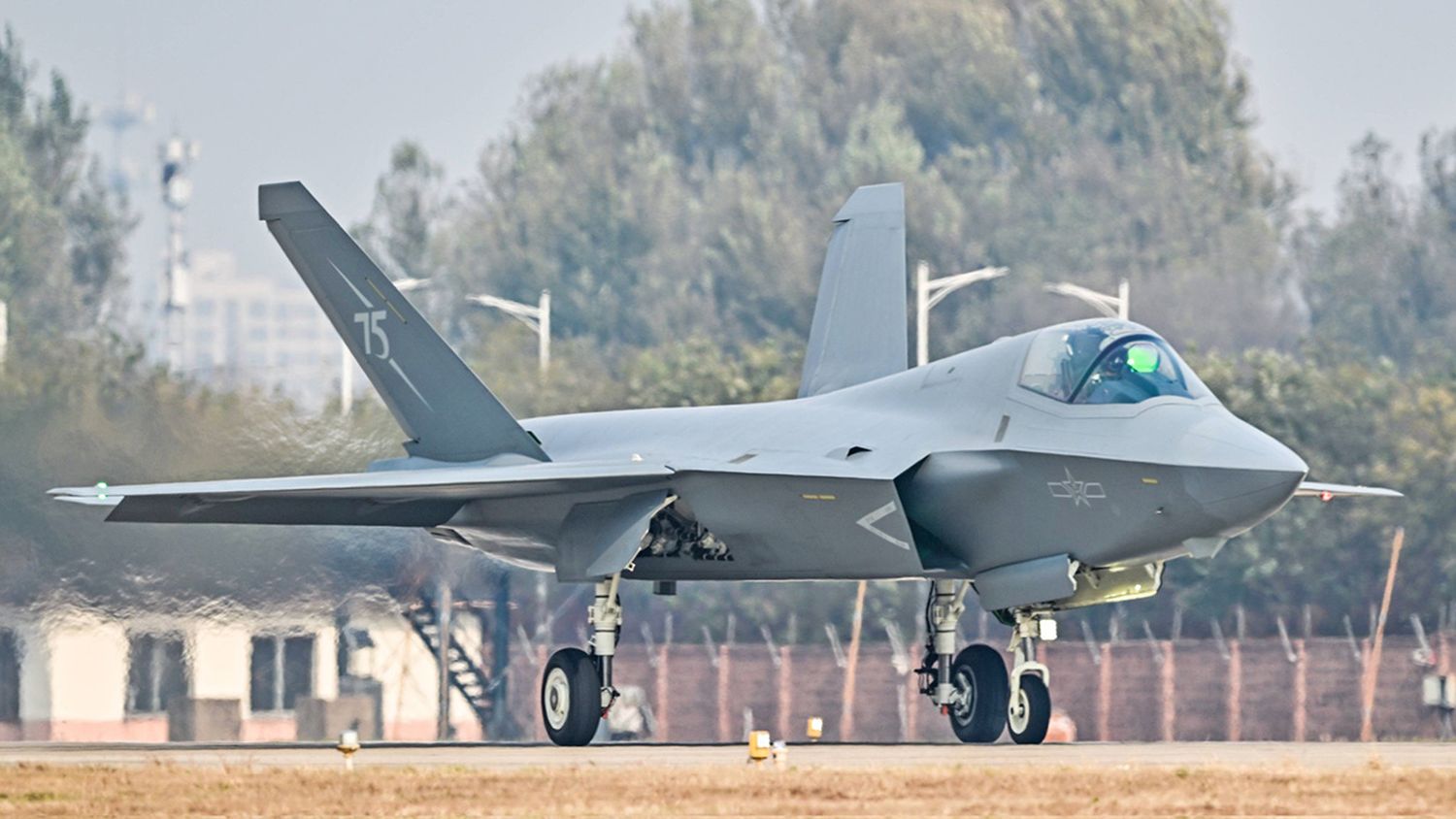China unveils its second fifth-generation fighter, the J-35A, to the public at Zhuhai Airshow
China’s second fifth-generation fighter was unveiled to the public yesterday, November 5, during the Zhuhai Air Show. Designated the J-35A, this aircraft is the latest evolution of the FC-31 project from China’s Shenyang, known for decades of manufacturing Russian MiG and Sukhoi fighters, from the Korean War era to recent times with the Flanker series.
China ?? unveils the J-35A, country’s second fifth generation fighter platform, at Zhuhai 2024.
The design is derived from the naval J-35 flying for a couple of years now. But here’s a look at how the PLAAF land-based variant has evolved from the very first prototype of 2012. pic.twitter.com/s1KtOsYVXA
— Rishav Gupta (ऋषव गुप्ता) | ?? (@connect_rishav) November 5, 2024
The J-35A is the variant developed specifically for the People’s Liberation Army Air Force (PLAAF) and for export, derived from the J-35 project, initially conceived as an on-board fighter to serve the needs of the People’s Liberation Army Navy (PLAN). The first prototype of the J-35A made its maiden flight in Shenyang on September 26, 2023. Countries such as Egypt and Pakistan have shown interest in the possible acquisition of the J-35A/FC-31 to strengthen their Air Forces with fifth-generation fighters.
The first version of the FC-31/J-35 fighter bore some resemblance to the Lockheed Martin F-22 Raptor, while the most recent variant, shown this week in anticipation at the Zhuhai Airshow, is much more similar to the F-35 Lightning II. These similarities have generated comments about possible plagiarism, fueled by the redesign of elements such as the canopy, air intakes and nose, which have made the J-35A taller and visually closer to the F-35, which also has navalized and land-based versions.
The resemblance to the F-35 appears to be no coincidence. More than a decade ago, Chinese-led cyberespionage maneuvers were reported in the United States that resulted in the theft of several terabytes of classified weapons systems information, including F-22 and F-35 blueprints and data. This data would have influenced the evolution of the design of the J-31, the precursor to the J-35, making it easier for China to develop its fifth-generation fighters.
Maybe the best comparison to the J-35A pic.twitter.com/RVS2okIunk
— @Rupprecht_A (@RupprechtDeino) November 5, 2024
Even so, it cannot be said that the J-35 is a simple copy of the F-35, as there are visible differences in its overall design that required specific solutions. For example, the J-35 is a twin-engine fighter with a central weapons bay, while the F-35 is single-engine with side armament bays, implying a completely different internal configuration between the two aircrafts. However, the information obtained would have allowed Chinese engineers to optimize the final design of the J-35, adopting certain solutions analogous to those of the U.S. fighter.
In addition to the J-35, China has developed and put into operation the Chengdu J-20 “Fagin”, the first fifth-generation fighter outside the United States to enter active service. Its development has been faster than that of the Russian Sukhoi Su-57 and, until recently, appeared to be the only manned stealth fighter of interest to the Chinese Air Force (PLAAF). However, the state of progress of the J-35A, unveiled at the Zhuhai Airshow, suggests that the PLAAF may now be actively backing this new development.


Comentarios
Para comentar, debés estar registrado
Por favor, iniciá sesión